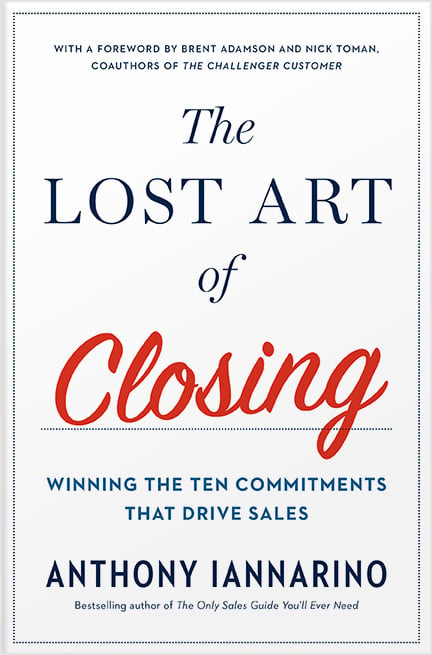Many people write about salespeople as if it was still 1978 when salespeople were more likely to use a high-pressure approach and when it was customary to straight pitch their prospective client. Most of what they write sets up a straw man that suggests that salespeople haven’t evolved over the last four decades, which is not only true but something that generally means they don’t spend time with salespeople.
Here is a list of reminders of how you might possess an other-oriented mindset, which allows you to create new opportunities and a preference to work with you by helping your client get what they need.
Something They’re Missing
One of the most important ways you can help your client is by sharing something that they are missing. One of the reasons your prospective clients aren’t willing to change is because they lack a compelling reason to do something different. One of the keys to executing a modern sales approach is compelling that change by providing them with insights, information, and ideas about what has changed and the implications for their business.
Your clients are often missing the context and the understanding of the factors that, if known and believed, would allow them to decide to pursue better results. When you can enable your client to recognize their unknown unknowns, the things they don’t know they don’t know, you open up new possibilities where none existed.
Excellent Questions
Your very best questions, the ones that serve your clients, are the ones that cause them to recognize something about themselves. The questions you ask your clients that create the greatest value for them are the ones that cause them to discover something about themselves, their company, their potential, and their better future.
When your client responds to your question with, “That’s a very good question,” you know you that they have just learned something they believe is useful. Modern discovery is as much about helping your client discover something valuable to them as it is you discover how to help them achieve better results.
A New Vision of What’s Possible
One of the reasons that the status quo often feels intractable is because your contacts don’t have a compelling vision of what is possible. You can help your client see what is possible when you show them what is already working, and what is necessary to make a change, and the results that follow.
Installing a vision of what is possible serves your clients by providing them with a new goal, a new initiative, and the direction they need to improve their business. You are proactive when you share that vision with your client before they have recognized it, which serves your client and positions you as the right kind of partner, one who knows what comes next.
Good Advice
The idea of being consultative doesn’t just mean avoiding high-pressure techniques and asking good questions, both of which are helpful. “Consultative sales” means providing good advice, advice that comes from an informed and experienced perspective. One way to think about this is that if your client already knew what they needed to do, they would already be doing it. If your competitor knew what to tell them to do, they’d have already done so.
In B2B sales, especially a complex sale, your advice creates more value than your solution, so you should start your conversations with the strategic outcomes you enable, not your product or solution.
Help Making Change
What a consultative salesperson does is help their clients make changes. Their work goes beyond just offering advice about the solution they need to bring a new vision to life, but also how to make it work inside their company. Even though the way buyer’s purchase has gone completely nonlinear, there are still some who would tell you that your contacts are in charge of the process, and you should allow them to lead and be responsive to their request, poor advice for a consultative salesperson.
One of the ways you take good care of your prospective clients is by controlling the process, ensuring they have the conversations, and the commitments necessary to make a good decision, including helping them with the internal sale required of initiatives that are going to require consensus. Because you are responsible for the outcome, you need to help manage the process of ensuring your clients do what is necessary.No more pushy sales tactics. The Lost Art of Closing shows you how to proactively lead your customer and close your sales. 
Help Executing
You don’t sell a solution. You sell an outcome. Your client needs help generating that outcome, which means you have to help ensure they do what they need to do to execute effectively and produce the results they bought and paid for when they signed your contract. Inevitably, there are challenges when it comes to flawless execution, sometimes on your side, sometimes on the client’s side.
When execution is a challenge, helping your team and your client get things on track, removing obstacles, and ensuring your client produces better results is how you make a difference.
In a recent interaction with a person who suggested relationships are secondary, the topic turned to the idea that one can sell in such a way that they create a preference so strong that they have an absolute right to the next initiative, project, or opportunity. Were that your goal, recognizing what your client needs from you and helping them acquire it is a good start towards that end.

Get the Free eBook!
Learn how to sell without a sales manager. Download my free eBook!
You need to make sales. You need help now. We’ve got you covered. This eBook will help you Seize Your Sales Destiny, with or without a manager.
Download Now







.jpg?width=768&height=994&name=salescall-planner-ebook-v3-1-cover%20(1).jpg)


